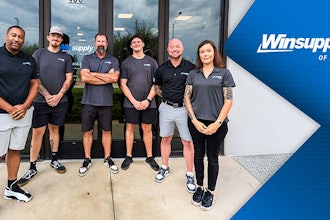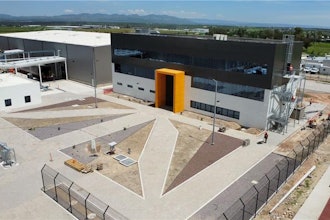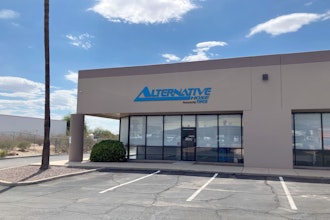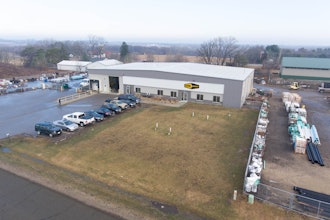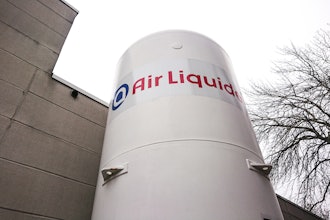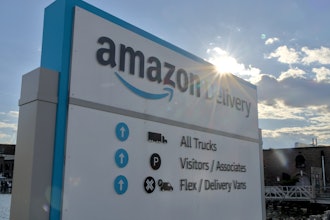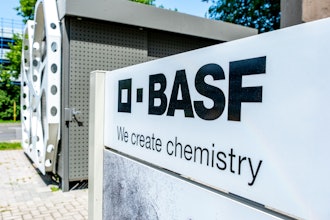Top performing wholesalers are addressing emerging
B2C/B2B type order flows by automating ‘once manual
processes.’
Online consumers and ecommerce are redefining the fulfillment
landscape, and wholesalers are flocking to open B2B/B2C online
ecommerce order portals to automate once manual flows.
Forcing your customer to place orders through your website may
be counterproductive and open the door for web browser based
pricing comparisons. Caution, ask yourself:
Is Your Omni-Channel Strategy Driving Your Customers to
Shop Your Competitors?
There are numerous new costs and challenges (such as B2C split
case each picking and free 2 day delivery, see next section) but
also some overlooked advantages. Solutions that address this
challenge must provide a unified customer experience through
the whole order management process even though they use
diverse systems and many partners to complete the order. The
data flows and applications must be tightly integrated and
IS YOUR OMNI-CHANNEL STRATEGY DRIVING
YOUR CUSTOMERS TO SHOP A COMPETITOR?
September, 2015
Wholesale companies are launching websites and order portals to address new order types under B2B/B2C convergence.
But encouraging your customer to place orders through your website may be counterproductive and encourage web
browser based pricing comparisons. Leaders are reducing order touches and finding hidden ROI with sales order
automation.
Bob Heaney, Research Director,
Supply Chain Wholesale/Retail
Top Performers are
3.5x
more likely to
automate once
manual email/fax/
orders via B2C
customer portals
www.aberdeen.com
provide a highly automated (not manual) flow of information
across numerous business system/areas and provide a seamless
customer experience.
The B2B/B2C Omni-channel Call to Action
87% of Wholesalers are trying to address eCommerce and multi-
channel or cross-channel demand. In a companion research
report (Business Transformation in Wholesale Distribution - Why
it is a Critical Time to Invest) we learned that new order-to-
delivery flows originating with the growth in omni-channel are
bringing new challenges that include:
Proliferation of order types and inventory streams –
the number of ways and channels through which an order
can be processed has exploded, with many
companies/systems not keeping pace.
Order density is increased – under B2B and B2C
convergence, companies are taking more orders to ship
the same volume. For instance for “DC bypass” and “drop
ship” traditional B2B are allocated into B2C orders. Not
only has the number of orders increased, but the terms
for an order have become more complex, and fall outside
the capability for traditional B2B EDI or automated
interfaces.
Order-to-delivery cycles are compressed – as
wholesalers add ecommerce portals and try to match the
same day and 2 day delivery cycle of Amazon. As a result,
manual order handling is introducing new processes for
order-to-delivery flow, and organizations are beginning
to understand added cost.
The top 30 companies, with the highest levels of automation, do
a better job at addressing these challenges. They are also better
at key cost and service metrics (see sidebar Leader Advantage).
Leader (top 30%)
Advantage
Versus less automated
Followers (remaining 70% of
companies):
• 95.4% of orders delivered
to customers complete and
on time outbound vs 86.4%
of Followers
• 94.6% of orders received
from inbound customers
complete and on time vs
84.8% of Followers
• -0.5% decrease in total
landed per unit costs in the
past year vs +8.5% increase
for Followers
• -7.5% decrease in the
frequency of out-of-stock
inventory in the past year
vs .9% increase for
Followers
95 Wholesale Companies Total
www.aberdeen.com
Top performers are 1.9-times as likely to segment by customer
and order type. They work to automate once manual processes
and are 2–times as likely to invest in process and technology.
These advanced capabilities and strategies lead to balance and
superior metrics.
Factors and Considerations B2B/B2C Convergence
Our research has documented the increase in both the scale and
complexity of order flows and delivery cycles. The growth in
offline, more manual B2C orders raise renewed challenges to
profitability and cost under B2B and B2C convergence. Factors
and concerns include:
80% of wholesale distributors say that they are
concerned about the impact to costs and profitability
with more B2C orders
Increase in order density and the growth in B2C order
types
Labor/shipping costs due to the introduction of more
split case quantity fulfillment and parcel delivery
Compression in the order to deliver cycle time that
comes with matching same day and 2 day delivery for the
new B2C orders
Manual and special offline processing as traditional
B2B EDI systems are supplanted by more complex
manual flows like email/fax and phone orders
These factors result in bifurcated processes, special handling,
and added costs. In the next section we discuss how wholesalers
have utilized automation to address order volumes, compressed
order-to-delivery cycles, and cost.
Touchless Orders and
Cycle Time
One grocery wholesaler increased
its number of touchless orders
from 10% to over 60% with 100%
order accuracy and 12%
improvement in fill rates. The
move to touchless orders also
allowed for a reallocation of the
customer service function. By
automating routine low-value
transactions, customer service
employees were liberated to focus
on phone and rush orders,
exception handling, and problem
solving.
Over a 2 year period, the sales
order automation solution
reduced order cycle time by 35%
and improved cash-to-cash
conversion by over 70%
www.aberdeen.com
Highest Shift in sales order automation is in B2C Web Portal
Over the 3 year period from 2011 and 2014, between the Top 30
2014 Automation Leaders and Bottom 30 2011 Followers, there
has been a decrease in the level of manual order levels. In the 3
year period the number of wholesalers processing manually
(email /fax /phone) decreased by:
34% on B2B orders
24% on B2C orders
This decrease in manual order processing levels is the byproduct
of a corresponding increase in business and customer adoption
of websites and portals. Here the Top 30 Automation Leaders in
2014 are:
350% more likely to automate via portal for B2C orders
333% more likely to automate via portal for B2B orders
…compared to Bottom 30 Automation Followers in 2011
Hence, the highest shift in automation, at 350% higher levels, is
the shift to automation via portal for B2C orders.
A disadvantage of a customer web portal is
that, particularly for B2B customers that use
a purchase order to receive against, it
requires item by item entry into the web
browser and encourages competitive
shopping:
B2B customers would prefer not to enter the information
both into their own purchase order system and then turn
around and reenter line by line using the seller’s web
portal.
Manual Sales Order
Automation
To reduce the redundant
keying of orders and PO
information,
wholesalers often
decide to supplement
the current user process
and convert email and
fax formats into XML or
other defined electronic
metadata and transmit
it to the order
management system.
www.aberdeen.com
Any customer using the browser based portal is a target
for shopping banners, for specific items and prices, with
links to buy from a competitor’s shopping website.
Product items and descriptions are saved in cookies
which can later be marketed by search engines like
Google and Bing to target and entice your customers to
comparison shop.
As the volume of manual B2C/B2B orders flows has
increased under omni-channel commerce, sales order
automation is growing in importance. To reduce the
redundant keying of orders and PO information,
wholesalers often decide to supplement the current
email/fax/order creation process by using an
automated solution that converts each format into xml
or other defined electronic metadata and transmits it
to the wholesaler’s order management system.
Hidden ROI of a streamlined cloud-ready automated solution
It is a given that more complex labor and process intensive B2C
Order are more costly for the myriad of factors we illustrated
earlier. The issue of order profitability is further compounded
because the time from order-to-delivery is radically compressed.
To match the Amazon cycle for same and next day delivery, B2C
order-to-delivery averages only 2.5 days (versus an average of
9.4 days for B2B orders.)
In Table 1 (next page) we demonstrate an often overlooked and
misunderstood hidden benefit of the compressed and more
efficient delivery cycle.
Cash-to-cash conversion cycle measures the amount of days
between the original outlay of cash to purchase inventory and
Cash-to-Cash
Conversion
Calculated as the sum of:
+ Days Inventory Outstanding
(DIO) - the current inventory level
and how many days are required
to sell this inventory
+ Days Sales Outstanding (DSO)
- the current sales and the
amount of days it takes to collect
the cash from these sales
Less: Days Payables
Outstanding (DPO) - the average
number of days before inventory
debt must be paid back to
vendors
www.aberdeen.com
when the wholesaler actually receives the cash from the
customer. The three components of the calculation (defined in
the sidebar) are summed together to yield a net negative 12.5
days value for B2C orders for an Automation Leader.
Table I: Sales Order Automation impacts Overall Cash-to-Cash Conversion
As the table illustrates there can be a favorable impact to the
companies Cash-to-Cash conversion cycle. Since B2C sales are
delivered for cash recognition in 2.5 days, the “Days Sales
Outstanding” (DSO) component is substantially less than the
39.4 DSO for B2B sales on credits. The net result is that inventory
sold via B2C orders is not payable to the vendor until 12.5 days
after the sales cash is received from the customer.
The hidden advantage, or payback, for investing in automation
of the order to cash cycle for B2C orders is this -12.5 days of
inventory. The Automation Leaders have captured the hidden
ROI and advantages. They have:
350% higher likelihood to automate B2C orders via
customer portals or sales order automation
2.5 days B2C order to cash/deliver vs 39.4 days on B2B
orders bought on credit
-12.5 days Cash-to-Cash Cycle versus +24.4 days on B2B
orders on credit
8.3 days overall blended B2C/B2B cash-to-cash cycle
versus the Followers/others with more B2B orders, sold
Leader Cash-to-Cash Conversion Values B2C B2B Leader 2014
+ Days Inventory Outstanding (DIO) 15.0 15.0 15.0
+ Days Sales Outstanding (DSO) - Order to Deliver/Cash 2.5 39.4 23.3
Less: Days Payables Outstanding (DPO) (30.0) (30.0) (30.0)
Equals : Cash-to-Cash Conversion Cycle days (12.5) 24.4 8.3
www.aberdeen.com
with 30 days credit terms, and have an overall cash-to-
cash cycle of 43.3 days
Key Process Steps and Recommendations
With B2B/B2C Convergence, new, more complex order flows are
both complicating and accelerating the speed of business. This
paper presents several complementary ways in which manual
order flows can be automated. Below we present several steps
and recommendations.
Build a system that automates B2B and B2C order
flows – The automation leaders are 2–times as likely to
invest in technology and are capturing new efficiencies in
order-to-cash and cash-to-cash conversion cycles.
Recognize the needs and preferences of your
customer - While B2C/B2B portals are necessary, they
often require double the work from your customer and
can lead to competitive shopping. You will still have
manual order types and customers who require POs to
receive against and do not want to change from emailing
or faxing their orders. In these instances, consider
alternative automation solutions as discussed in the next
step.
Understand the complementary sales automation
solutions - Leading companies complement e-portal
solutions while reducing the propensity to comparison
shop. They are streamlining the email/fax PO delivery
process in use by their customer today and simply
leveraging an automated, cloud-ready solution to
transform the metadata and update the order
management system without manual process or
intervention.
By automating B2B and
B2C order flows by
customer you can
improve order
throughput, obtain
100% accuracy, and
reduce manual
intervention. You can
also compete with 2 day
delivery standards to
capture the hidden ROI
associated with
negative cash-to-cash
conversion cycles
www.aberdeen.com
Capture hidden ROI and Order-to-deliver efficiencies -
By selecting the proper way to automate B2B and B2C
order flows by customer you can improve order
throughput, obtain 100% accuracy, and reduce manual
intervention. You can also compete with 2 day delivery
standards and hence capture the hidden ROI associated
with negative cash-to-cash conversion cycles as
illustrated in this report.
About Aberdeen Group
Since 1988, Aberdeen Group has published research that helps businesses worldwide improve their performance. Our
analysts derive fact-based, vendor-agnostic insights from a proprietary analytical framework, which identifies Best-in-Class
organizations from primary research conducted with industry practitioners. The resulting research content is used by
hundreds of thousands of business professionals to drive smarter decision-making and improve business strategy.
Aberdeen Group is headquartered in Boston, MA.
This document is the result of primary research performed by Aberdeen Group and represents the best analysis available at
the time of publication. Unless otherwise noted, the entire contents of this publication are copyrighted by Aberdeen Group
and may not be reproduced, distributed, archived, or transmitted in any form or by any means without prior written
consent by Aberdeen Group.
Is your Omni-Channel Strategy Driving Your Customers to Shop A Competitor?
Wholesale companies are launching websites and order portals to address new order types under B2B/B2C convergence. But encouraging your customer to place orders through your website may be counterproductive and encourage web browser based pricing comparisons. Leaders are reducing order touches and finding hidden ROI with sales order automation.
Latest in Home
Winsupply Adds North Texas Subsidiary
August 28, 2025
ABC Supply Acquires Mississippi Company
August 27, 2025










